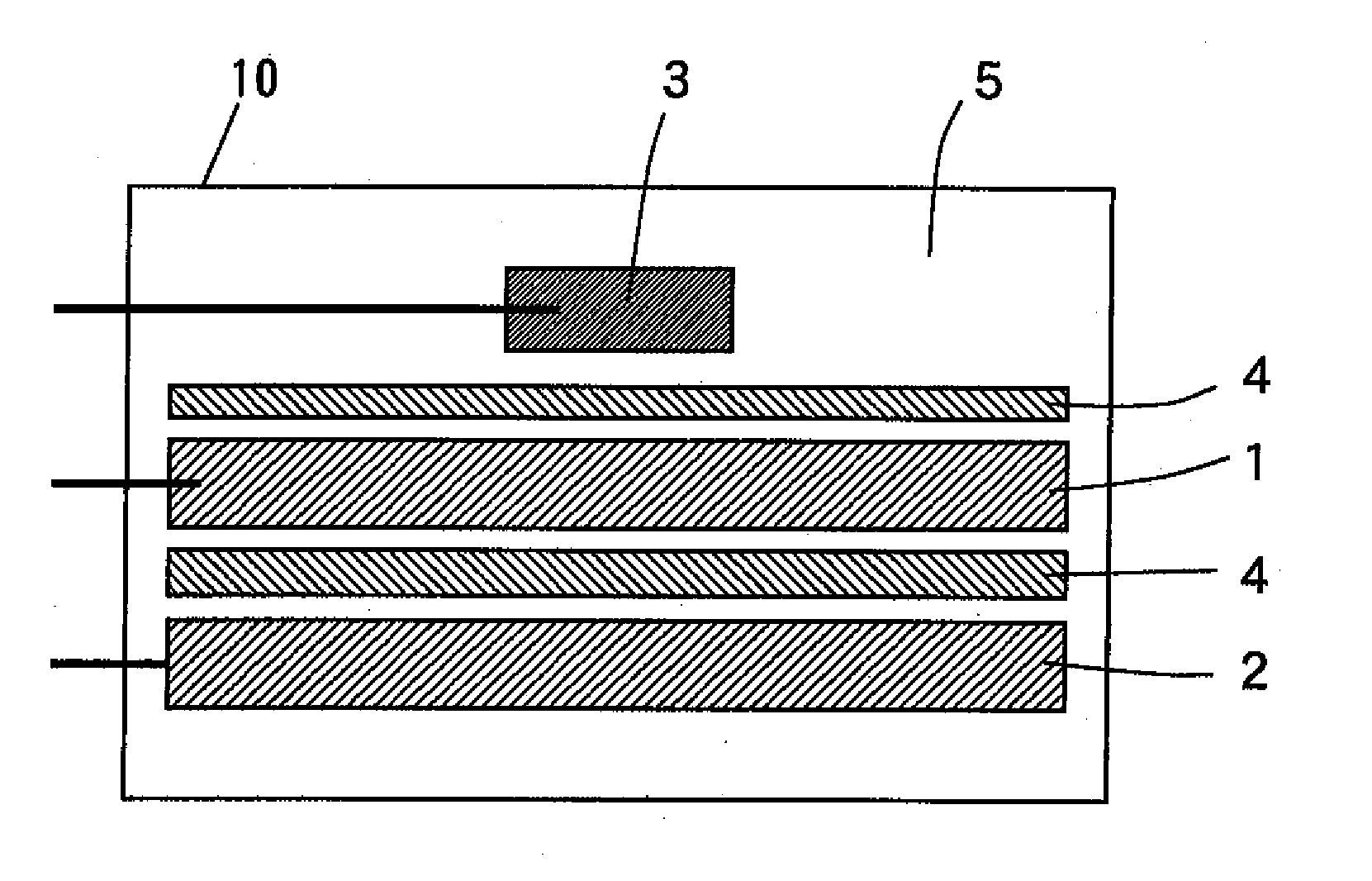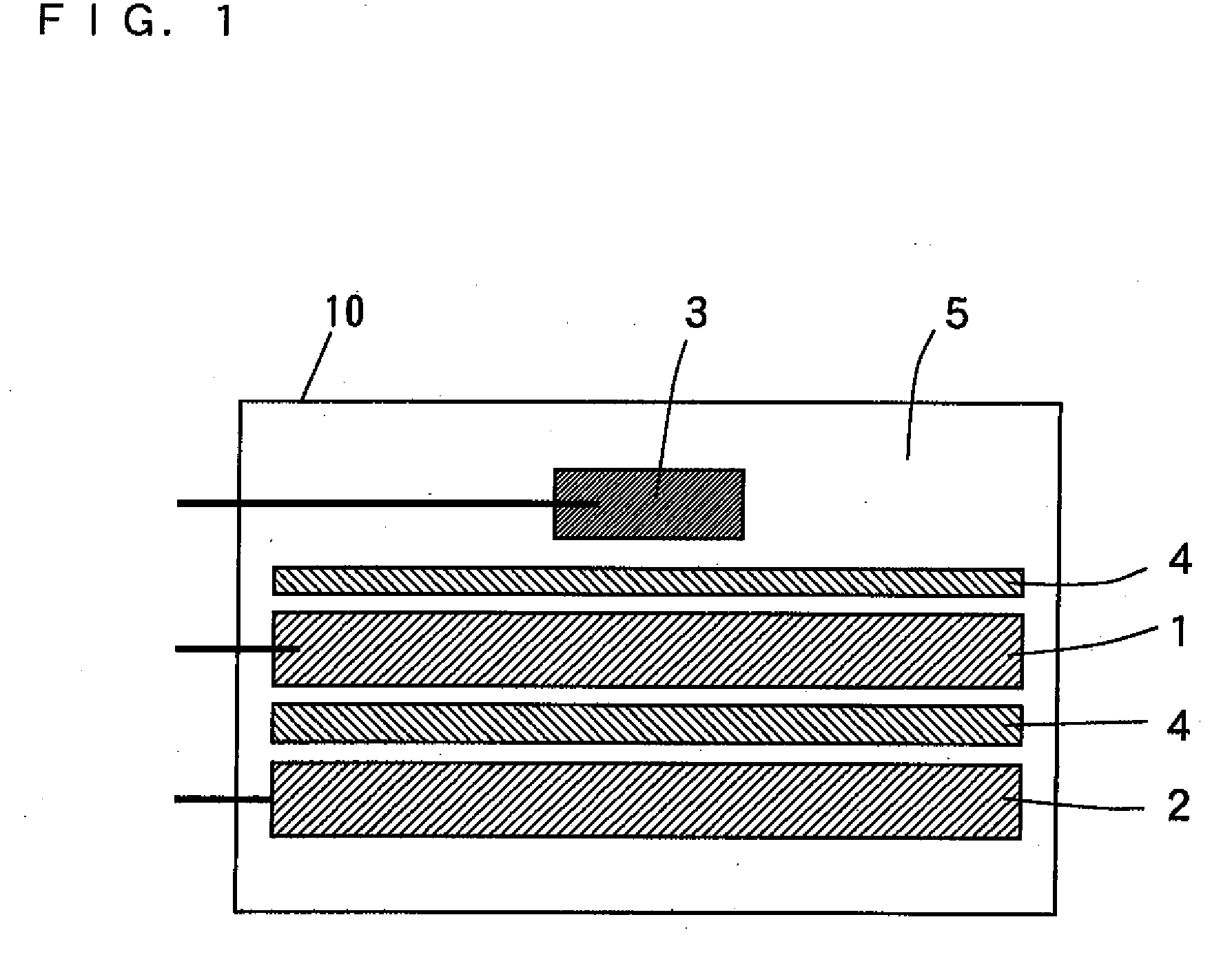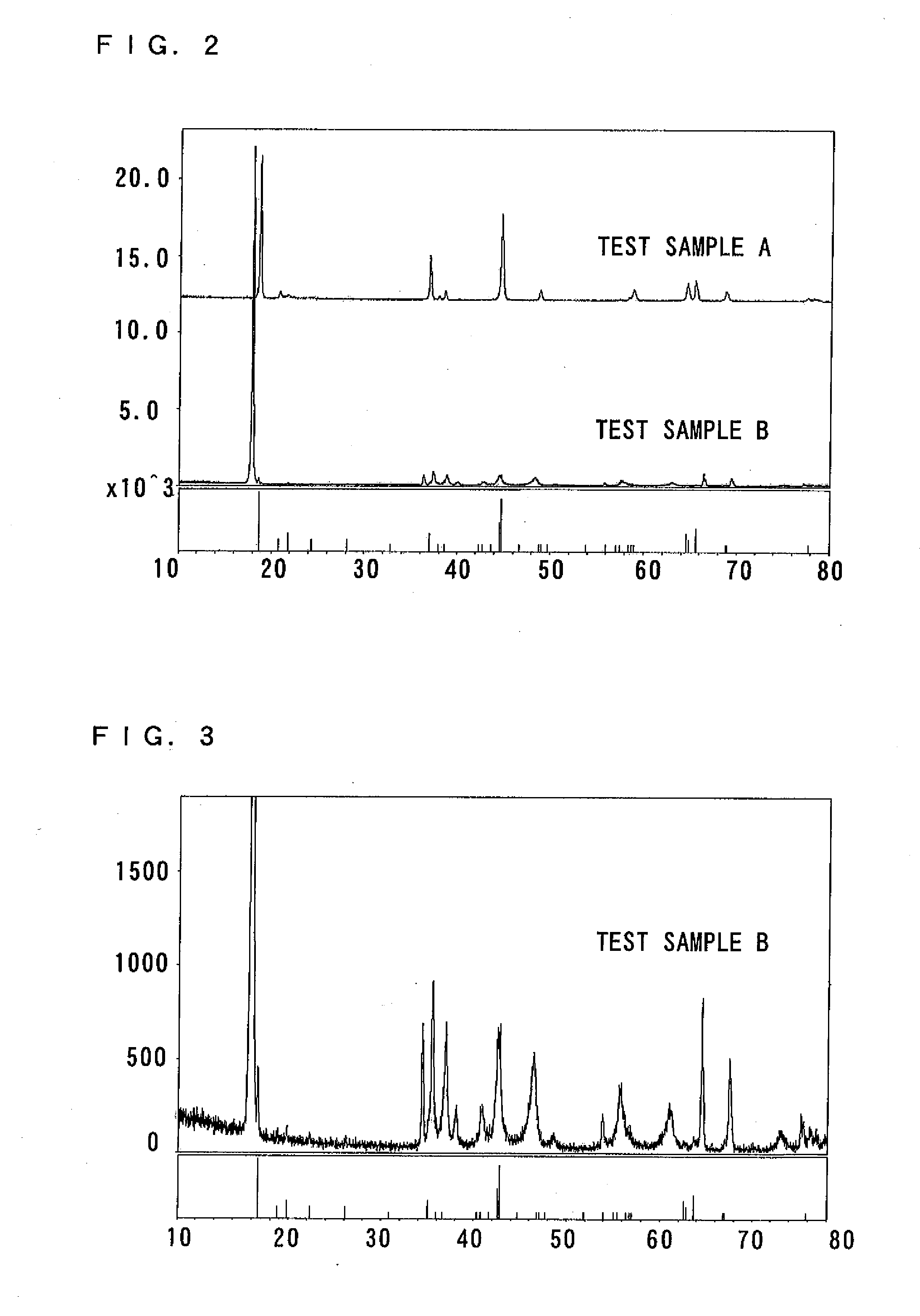Nonaqueous electrolyte secondary battery and method of manufacturing the same
a technology of nonaqueous electrolyte and secondary batteries, which is applied in the direction of cell components, final product manufacturing, sustainable manufacturing/processing, etc., can solve the problems of increasing power consumption, difficult to synthesize many lithium transition metal oxides, layered compounds, etc., and achieve the effect of improving initial charge-discharge efficiency and high capacity
- Summary
- Abstract
- Description
- Claims
- Application Information
AI Technical Summary
Benefits of technology
Problems solved by technology
Method used
Image
Examples
example 1
(a) Inventive Example 1
(a-1) Charge-Discharge Test
[0103]The test cell of the nonaqueous electrolyte secondary battery was fabricated based on the foregoing embodiment, and the charge-discharge test was performed using the fabricated test cell. A current density as used herein was 0.125 mA / cm2, which corresponds to about ⅕ lt. Note that a current value at which a rated capacity is completely discharged in an hour is referred to as a rated current, and expressed as 1.0 C. This is expressed as 1.0 lt by SI (System International) units.
[0104]Examples of the first layered oxide with the initial charge-discharge efficiency of less than 100% used in the charge-discharge test, and initial discharge capacity densities, initial charge-discharge efficiencies and average potentials thereof are shown in Table 1.
TABLE 1INITIAL DISCHARGEINITIAL CHARGE-AVERAGECAPACITY DENSITYDISCHARGE EFFICIENCYPOTENTIALNo.COMPOSITION FORMULA[mAh / g][%][V](1)Li[Li0.2Mn0.54Ni0.13Co0.13]O2252793.64(2)Li[Li0.17Mn0.33Co...
##ventive example 2
(b) Inventive Example 2
(b-1) Test sample A (first layered oxide)
[0117]Coprecipitate of manganese, nickel and cobalt in a 54:13:13 (Mn:Ni:Co) ratio and lithium hydroxide was fired for 20 hours at 900° C., so that Li1.2Mn0.54Co0.13Ni0.13O2 was obtained as the test sample A. The test sample A corresponds to the first layered oxide.
(b-2) Test sample B (Second layered oxide)
[0118]Na0.7Li0.1Mn0.5Co0.5O2 (a mixture of 88% lithium nitrate and 11% lithium chloride) was put in a molten salt bed, and held for 10 hours at 300° C., so that Li0.81Mn0.5Co0.5O2 was obtained as the test sample B. The test sample B corresponds to the second layered oxide.
[0119]As a result of an elemental analysis of the obtained test sample B, it is estimated that the ratio of lithium, manganese and cobalt is 0.81:0.5:0.5 (Li:Mn:Co), and oxygen is O2. Regarding oxygen, it is considered that some oxygen deficiency may exist.
(b-3) XRD Measurement and Charge-discharge Test of the Test Sample A and Test Sample B
[0120]XRD...
example 3
(c) Inventive Example 3
(c-1) Fabrication of the Positive Electrode
[0128]The mixed positive electrode active material in which the test sample A and the test sample B of the inventive example 2 were mixed at 50:50 (weight %), carbon as the conductive agent, and an N-methyl-2-pyrrolidone solution with polyvinylidene-fluoride as the binder dissolved therein were adjusted such that the weight ratio of the mixed positive electrode active material, the conductive agent and the binder was 90:5:5 to be kneaded, so that the positive electrode slurry was prepared. The prepared positive electrode slurry was applied on an aluminum foil as the collector to be dried, so that a positive plate was obtained. Then, the obtained positive plate was cut in a long-sized shape of 750×55 mm2, thus obtaining the positive electrode.
(c-2) Fabrication of the Negative Electrode
[0129]Graphite as a negative electrode active material, styrene-butadiene rubber as the binder, and an aqueous solution in which carboxy...
PUM
| Property | Measurement | Unit |
|---|---|---|
| Fraction | aaaaa | aaaaa |
| Efficiency | aaaaa | aaaaa |
| Electric charge | aaaaa | aaaaa |
Abstract
Description
Claims
Application Information
 Login to View More
Login to View More - R&D
- Intellectual Property
- Life Sciences
- Materials
- Tech Scout
- Unparalleled Data Quality
- Higher Quality Content
- 60% Fewer Hallucinations
Browse by: Latest US Patents, China's latest patents, Technical Efficacy Thesaurus, Application Domain, Technology Topic, Popular Technical Reports.
© 2025 PatSnap. All rights reserved.Legal|Privacy policy|Modern Slavery Act Transparency Statement|Sitemap|About US| Contact US: help@patsnap.com



